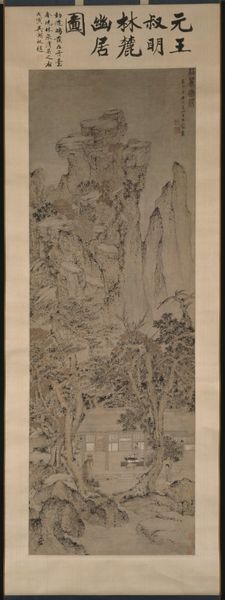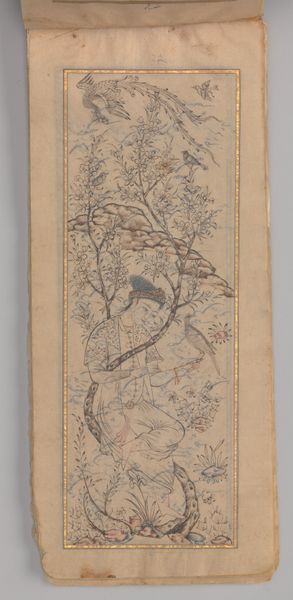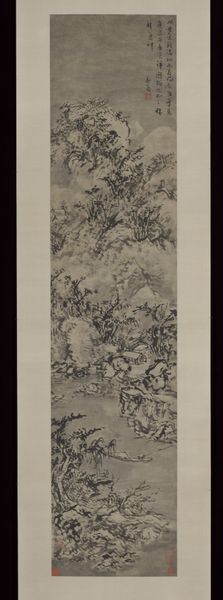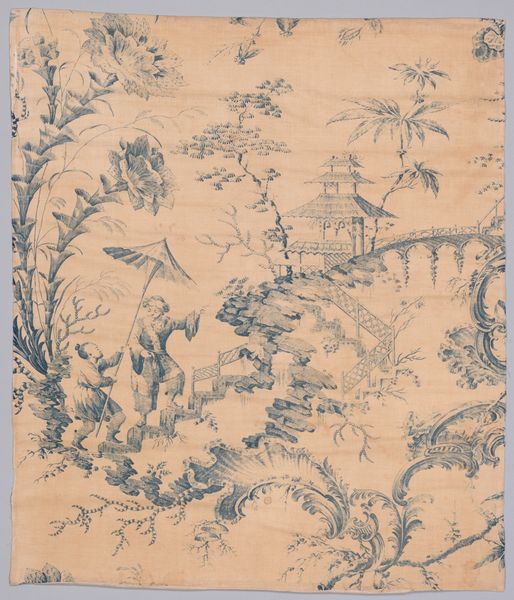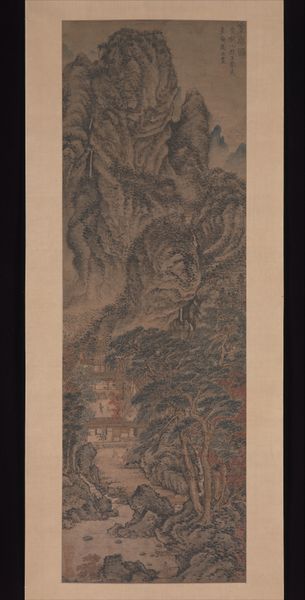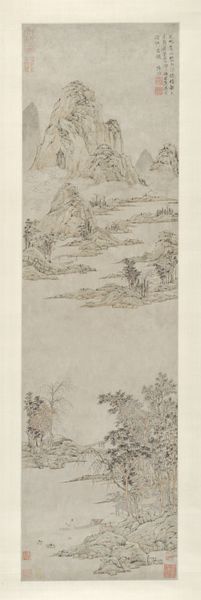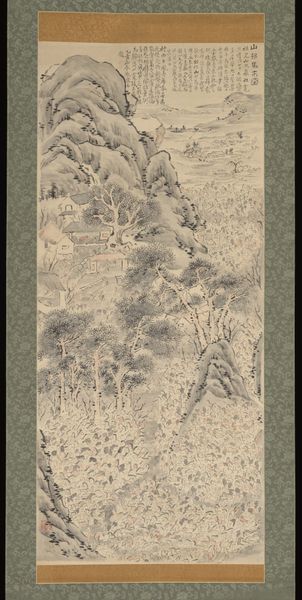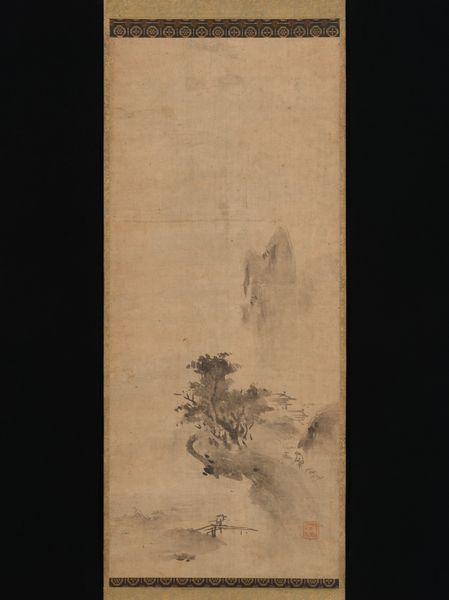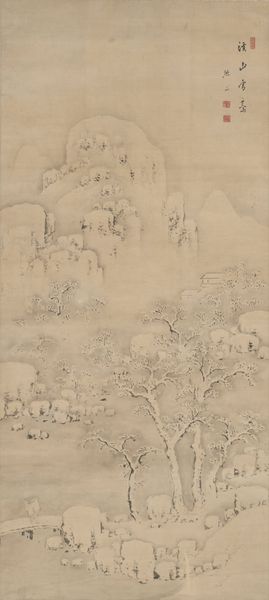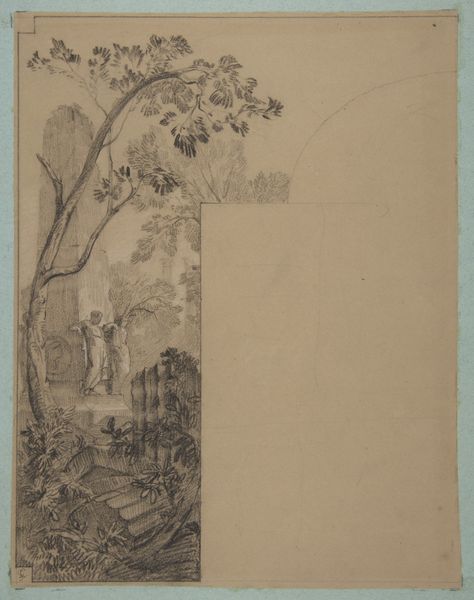
drawing, paper, watercolor, ink
#
drawing
#
asian-art
#
landscape
#
waterfall
#
paper
#
watercolor
#
ink
#
water
#
watercolor
Dimensions: 43 1/2 x 9 3/4 in. (110.5 x 24.8 cm)
Copyright: Public Domain
Curator: "Recluse Gazing at a Waterfall," rendered in 1559 by Ju Jie, invites us into a meditative space crafted with ink and watercolor on paper. What strikes you immediately about its visual presence? Editor: The muted tones lend a sense of quietude. The composition is delicate, almost ethereal, suggesting a moment suspended in time. It gives the impression of being aged or like its from a very removed past. Curator: That resonates with the cultural context. Ju Jie was part of a literati movement emphasizing personal expression through art, directly challenging the prevailing court styles. He seeks escape from political machinations. Editor: And that manifests visually in the layering of forms, doesn’t it? The cascading waterfall bisects the composition, while a figure, the recluse, is almost dwarfed by nature’s grandeur. It evokes a Daoist reverence for nature’s immensity. I'd bet my hat he is running from court! Curator: Indeed. Semiotically, the waterfall is working as an aesthetic representation of purification. In classical Chinese garden design, carefully planned spaces are not intended to control nature, but facilitate spiritual contact with it, allowing the participant to be renewed. In addition to spiritual growth, water promotes health, and wellness; water can indicate sources of food that nourish people and their societies, too. It is also closely related to the political sphere, symbolizing the very sources of civilizations and societies, it also may symbolize the court he is trying to evade. Editor: I notice the restraint in color. It is more suggestive than descriptive. It reinforces the feeling of introspection and the simplicity of the recluse's life and focus. The texture on the brushstrokes creates a pleasing contrast. Curator: Precisely. The negative space surrounding the central image plays an important part in the balance of forms within the total work. And, for literati artists, calligraphy and poetry inscribed on the painting were as critical to the experience as the pictorial elements. Editor: So the work's physical display and reception, mounted as a hanging scroll as it is at The Met, furthers this contemplative goal you suggest. What do you leave with now, regarding Ju Jie and his artistic aims? Curator: I see the enduring value of understanding this artwork’s original setting and function, and how our contemporary understanding remains dependent on context. Editor: I’m now more deeply engaged with its subtle beauty and what feels like its powerful stillness— a pause in our rushed routines for much-needed contemplation, if even only for a moment.
Comments
No comments
Be the first to comment and join the conversation on the ultimate creative platform.
